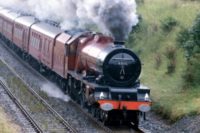The National Transportation Safety Board’s (NTSB) recently released report on its investigation into a crash between a train and a “light rail vehicle” near Sacramento, California provides a fascinating glimpse into what goes on behind-the scenes of railroad industry operations.
27 injured
The incident, which occurred at 9:38 p.m. on August 22, occurred when a northbound Sacramento Regional Transit District (SacRT) Blue Line passenger train collided head on with a southbound SacRT maintenance Light Rail Vehicle (LRV) that was stopped. The collision caused non-life-threatening injuries to 27 passengers and crew members, sending 13 to area hospitals for treatment.
Preliminary data from the event recorders showed that the train was traveling about 32 mph when it struck the LRV.
According to the NTSB:
The train was running about 15 minutes behind its designated schedule. A maintenance train technician requested and received permission from the controller at the Metro Control Center to enter the mainline to complete postmaintenance intervention propulsion testing. After receiving permission, maintenance LRV No. 310 proceeded northbound on the outbound track. The technician made several throttle manipulations, reaching speeds of 50 mph before bringing the train to a stop. The technician then reversed ends and began operating southbound on the outbound track. Meanwhile, passenger train No. 9 was moving northbound on the outbound track toward maintenance LRV No. 310.
At the time of the accident, extra train movements were verbally authorized to occupy the main track. Regularly scheduled train movements were governed by signal indication. The territory was under SacRT Metro control with the radio operator located in the control center.
The investigation continues
NTSB investigative activities going forward will focus on rail operations of SacRT, signal system operations, the performance of SacRT employees, and management oversight of the property, both internal and external.
Parties to the investigation include the Federal Transit Administration, State of California Public Utilities Commission, Sacramento Regional Transit District, Amalgamated Transit Union, International Brotherhood of Electrical Workers, and the American Federation of State, County and Municipal Employees.


